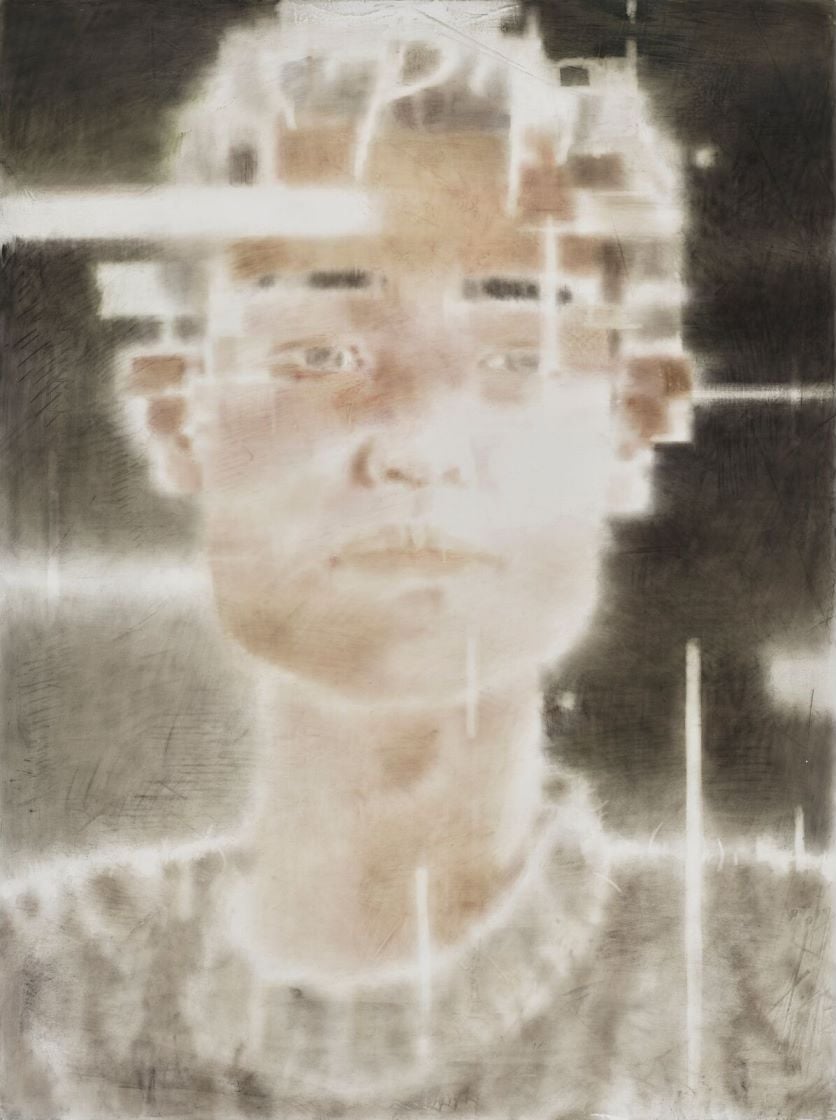
Currently based in Beijing, artist Xia Yu creates dynamic and atmospheric paintings in tempera—a medium that he has engaged with for over a decade. Through a process of subtle experimentation with tempera, and exploration of the medium’s history, Xia has developed a singular practice wherein he can execute nuanced depictions of texture through translucent layers. Capturing the ethos of Eastern aesthetics while simultaneously engaging with contemporary perspectives, his work challenges viewer expectations both of what tempera can achieve as well as modern perspectives on humanity and society.
On view through October 6, 2024, Xia is the subject of the major solo show “Golden Hour” presented by the Hive Center for Contemporary Art, the artist’s representing gallery, at the K11 Musea Art and Cultural Center in Hong Kong, the artist’s first exhibition in the city. “Golden Hour” is comprised of more than 30 works dating from 2020 through this year, and is curated and organized by Laura Shao.
Marking the occasion, we reached out to Xia to learn more about what went into this exhibition, as well as what about tempera specifically appeals to his practice.
Xia Yu, Portrait of Xia Yu (2024). Courtesy of the Hive Center for Contemporary Art, Beijing / Shanghai.
With the opening of your solo exhibition ‘Golden Hour’, could you introduce us to the works currently on display, as well as the main themes or inspirations behind this series of works?
The works in this exhibition mainly focus on new paintings from the past two or three years, with about 30 pieces in total. My creative work can be summarized by the title of an exhibition I had in 2021, “Here and Now.” It reflects the people around me in this time and place, and how they confront their lives and work in today’s information and digital age. I don’t want the present to simply pass by; I believe that different eras offer different representative or typical patterns to explore, and I attempt to do this through painting.
What elements or features of this medium are particularly appealing to you, as you primarily use tempera?
First of all, tempera is different from other mediums in that it has a soft and hazy texture, which I find very appealing. Later, I made some improvements on the tempera technique to give it a stronger and brighter sense of light, which provided support for the style and structure of my paintings.
Xia Yu, Dawn View Over Green Mountains (2024). Courtesy of the Hive Center for Contemporary Art, Beijing / Shanghai.
What was the experience of working with curator and organizer Laura Shao? What was the process of organizing this exhibition?
Laura and I have known each other for quite some time, and she is very talented and capable. For this exhibition, she handled everything from selecting the paintings and planning the layout to communicating with K11 and writing the exhibition text. The article she wrote is stunning and better than what I could have written; it has a sense of grandeur throughout. I’m especially grateful to her, and our collaboration has been very smooth.
Light is an important element in your works, and where do you often draw inspiration from—both in general and in this exhibition?
In observing figurative painting from different eras, I distinctly sense the variations in light across periods, each with its own characteristics. For example, historical works often feature point light sources like candles and torches, while more modern paintings use diffuse light. My perception of light in today’s society is intense, fragmented, and characterized by a sense of speed and flicker. I aim to intensify this feeling in my work.
Xia Yu, Incoming Light III (2024). Courtesy of the Hive Center for Contemporary Art, Beijing / Shanghai.
Can you describe your creative process? Do you know exactly what you want your work to look like, or do you work more intuitively?
I start by creating the base, which is crucial because the light in my paintings is expressed through the areas of the base that are left blank, directly impacting the final effect. Before painting, I make small sketches to roughly estimate what the final piece will look like, and I continually adjust during the painting process, like feeling my way toward a dim, vague light.
What do you hope visitors to the exhibition will gain?
Because the paintings I draw convey emotions that I deeply feel, I hope to express similar feelings to the paintings’ audience through my paintings. On the other hand, I invest a lot of effort and thought into aspects like shape, color, composition, and texture, and I also hope that others can see my dedication and understanding of painting.
Xia Yu, Short Song (2024). Courtesy of the Hive Center for Contemporary Art, Beijing / Shanghai.
Can you tell us what you are currently doing or what you hope to do next? What topics or ideas do you want to further explore?
I consistently develop my themes and aim to give my paintings stronger expressiveness. Painting for me is like crossing a river by feeling for each stone; the next step is determined by the previous one, and I move forward gradually.
“Xia Yu: Golden Hour” is on view at the K11 Musea Art and Cultural Center, Hong Kong, through October 6, 2024.